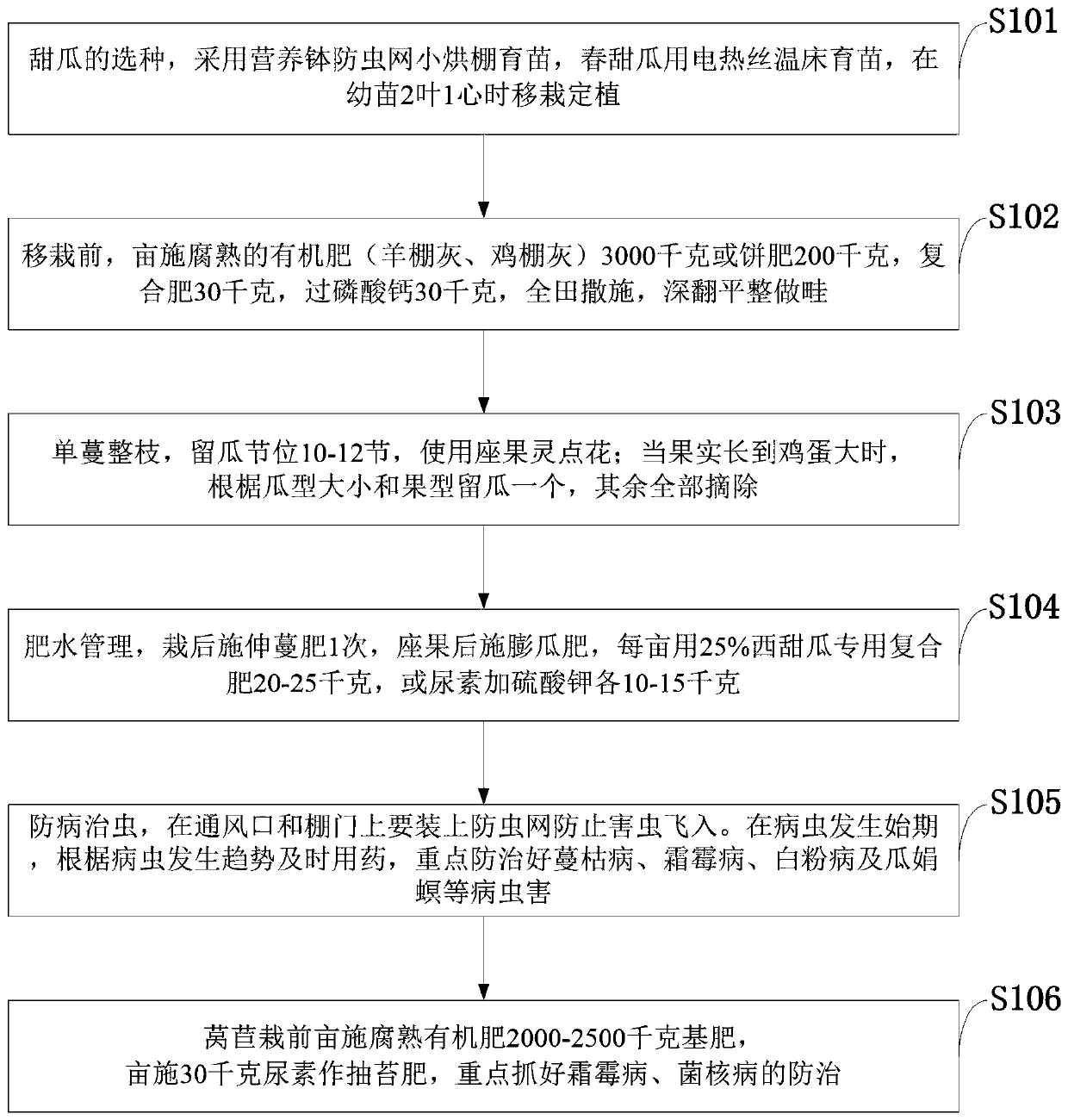Method for efficiently planting stubbles
A stubble and high-efficiency technology, applied in botany equipment and methods, greenhouse cultivation, climate change adaptation, etc., can solve the problems of low comprehensive benefit, low price, short time for greenhouse facilities and land use, etc.
- Summary
- Abstract
- Description
- Claims
- Application Information
AI Technical Summary
Problems solved by technology
Method used
Image
Examples
Embodiment 1
[0039] The method for efficiently planting stubble that the embodiment of the present invention provides comprises the following steps:
[0040] 1. Melon
[0041] (1) Choose good breeds
[0042] Choose Haimi 2 or Haimi 2 fine variety
[0043] (2) Cultivate strong seedlings
[0044] Autumn melons are raised in small drying sheds with nutrient bowls and insect-proof nets, and spring melons are raised in electric heating wire hotbeds. Focus on temperature and humidity management in the seedbeds to obtain full and strong seedlings. Transplant and plant when the seedlings have 2 leaves and 1 heart.
[0045] (3) Fertilization and furrowing
[0046] Before transplanting, apply 3,000 kg of decomposed organic fertilizer (sheep shed ash, chicken shed ash) or 200 kg of cake fertilizer, 30 kg of compound fertilizer, and 30 kg of superphosphate.
[0047] (4) Pruning and keeping melons
[0048] Single vine pruning, 10-12 melon nodes are left, and fruit-setting flowers are used. When the...
Embodiment 2
[0056] This stubble is more commonly planted in the Haimen Agricultural Science and Technology Demonstration Park. Through practice in recent years, the park has summed up the high-efficiency cultivation mode of "autumn melon-winter lettuce-spring melon". This mode generally yields about 2,000 kilograms of autumn melons and 1,800 kilograms of spring melons per mu, at 4 yuan per kilogram. Calculated, the output value per mu of two ripe melons is about 15,000 yuan, plus the yield of winter lettuce is 2000-2500 kilograms per mu. Calculated at 1.5 per kilogram, the output value per mu is more than 3,000 yuan, and the total annual output value per mu is more than 18,000 yuan. After deducting costs (seeds, fertilizers) , pesticides, agricultural film, labor, shed rent, etc.) The net income per mu is about 11,000 yuan.
PUM
 Login to View More
Login to View More Abstract
Description
Claims
Application Information
 Login to View More
Login to View More - R&D
- Intellectual Property
- Life Sciences
- Materials
- Tech Scout
- Unparalleled Data Quality
- Higher Quality Content
- 60% Fewer Hallucinations
Browse by: Latest US Patents, China's latest patents, Technical Efficacy Thesaurus, Application Domain, Technology Topic, Popular Technical Reports.
© 2025 PatSnap. All rights reserved.Legal|Privacy policy|Modern Slavery Act Transparency Statement|Sitemap|About US| Contact US: help@patsnap.com

